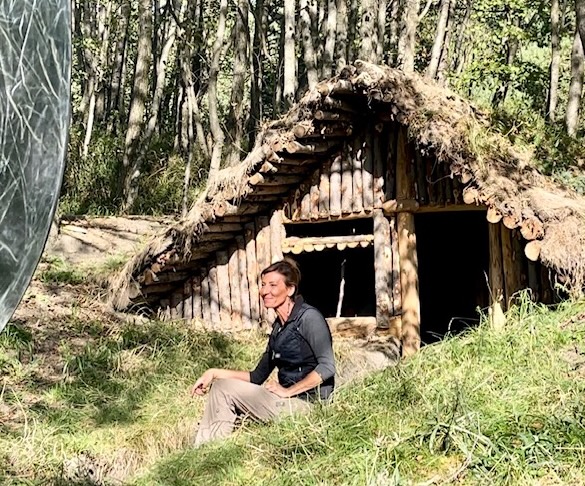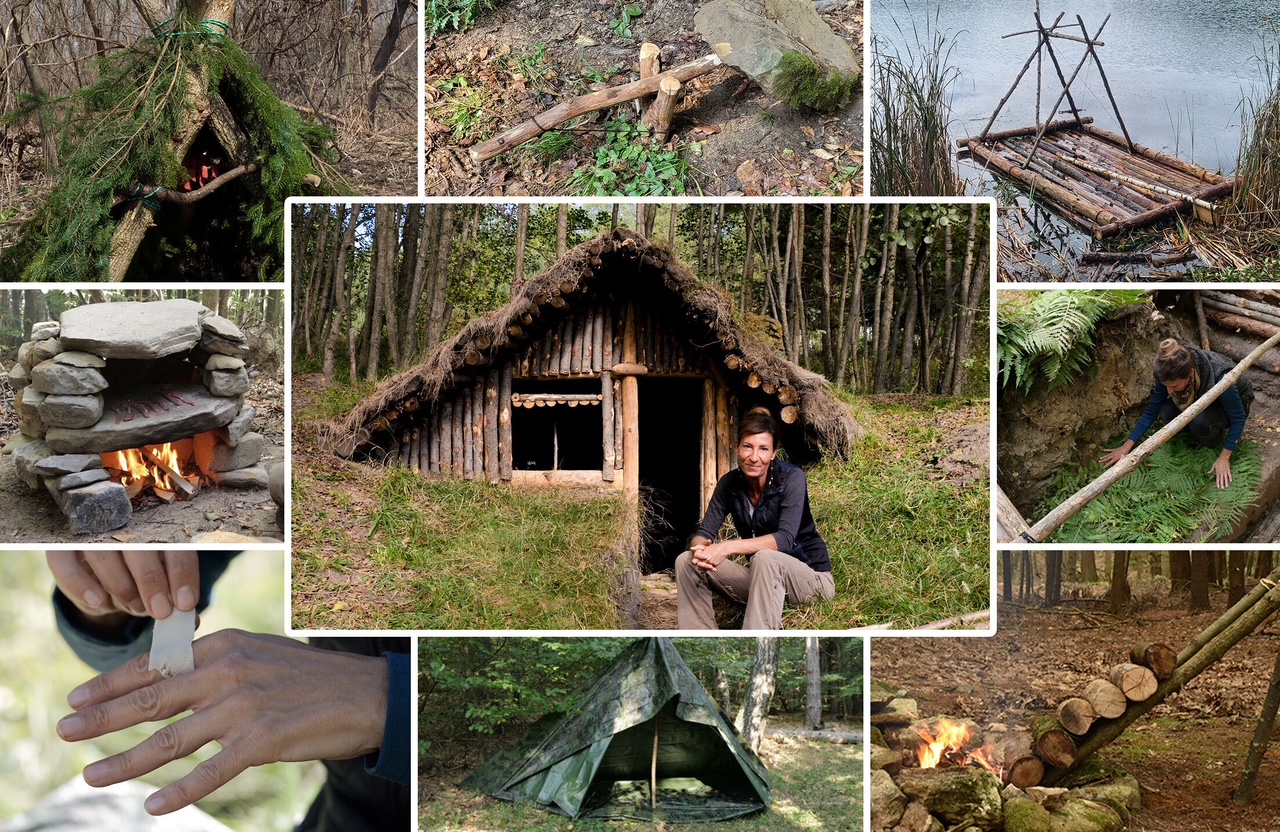Surviving & Thriving in Nature
When I set out to write my Wilderness Long-Term Survival Guide, it was with the intent to share valuable information about wilderness living and to keep you and your family safe, healthy, and secure if a major crisis hits and you need to head for the woods. Even if there isn’t a clear and present danger, this guide is invaluable for both seasoned wilderness explorers and casual hikers. Any outdoor enthusiast will appreciate the detailed tips, photographs, and illustrations that will keep your adventure enjoyable and secure. I always keep it with me when out in nature and I hope that you and your loved ones will too! This post is the first of three in my Survival Series and will cover shelter. The adventure starts now!
Exploring Different Shelter Options
In my guide, I cover several different types of shelter in the wild: One-Week Debris Shelter, One-Month Shelter, and Long-Term Shelter. The following are brief overviews, for the full instructions, see my survival guide.
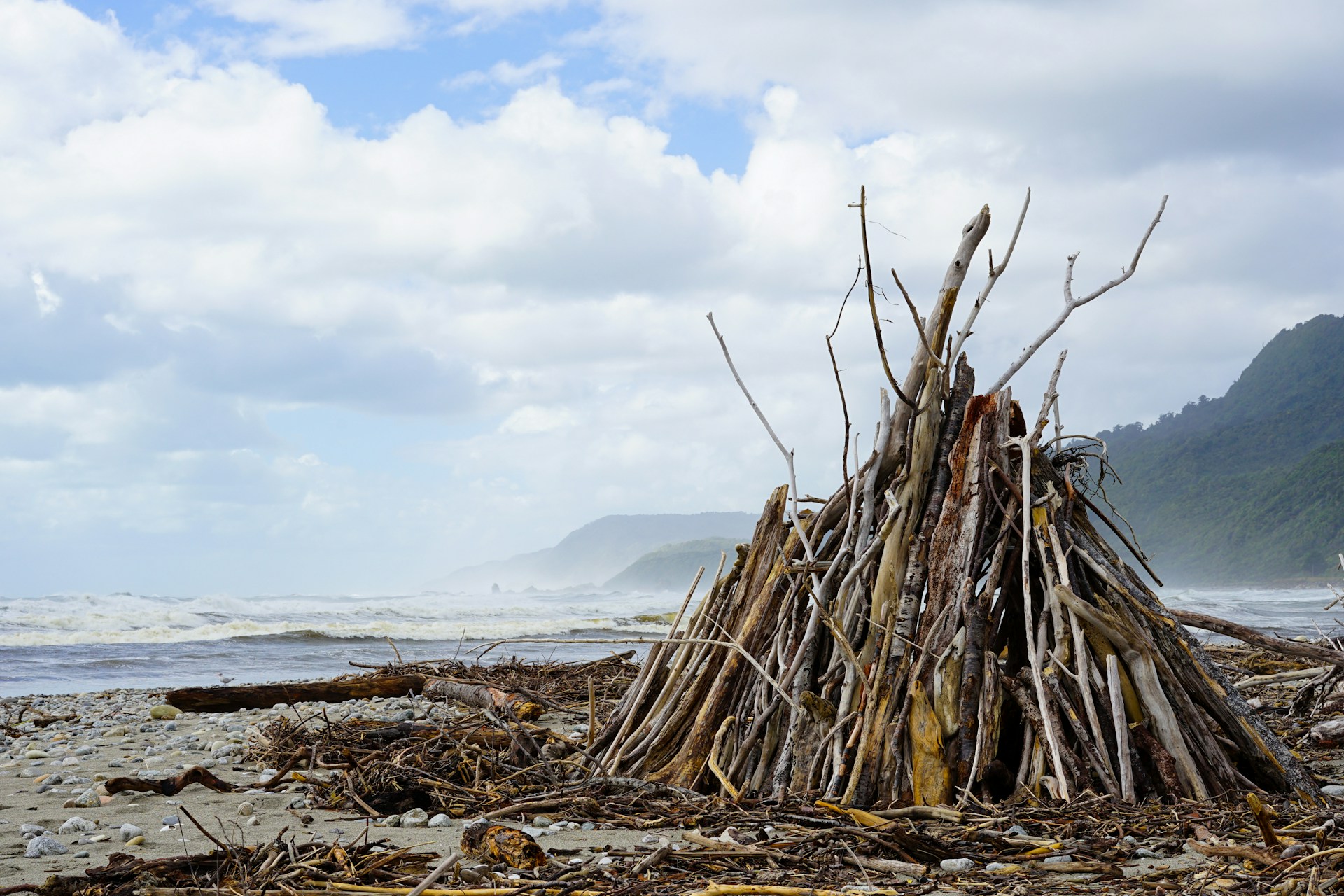
One-Week Debris Shelter
The simplest of the three, this type of shelter utilizes readily available materials around you. It is an essential bushcraft skill that is excellent for beginners, especially if you find yourself lost or dealing with an unexpected weather event while hunting or hiking. This is important knowledge for emergencies if you find yourself exposed to severe weather or need to stay in the wilderness longer than anticipated. As the name suggests, it is a temporary shelter for a week or less. Detailed instructions for a simple debris shelter can be found in my post, Adventure Awaits: Mastering Outdoor Skills with Your Kids & Family.
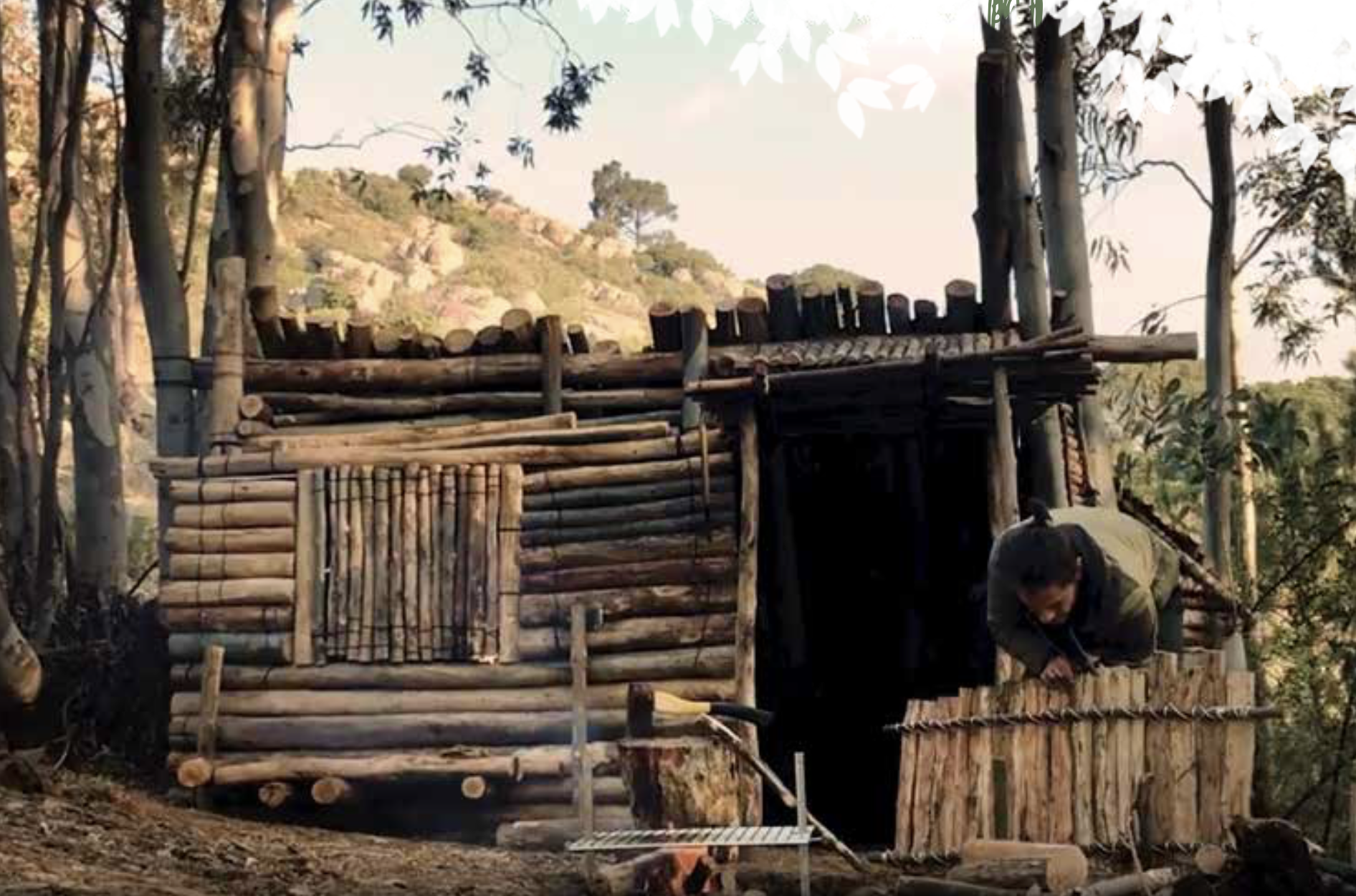
One-Month Shelter
Building a survival shelter for one month presents its own unique challenges as it straddles the line between short-term and long-term survival, thus requiring adjustments for evolving environmental conditions. What’s more, ensuring comfort becomes a priority since a month-long stay requires more livable accommodations than a brief one-week stop.
The shelter detailed here was built by survivalist Jacques Roos and is similar to the one I built on the Alone show. The first step is to choose your building site — in this case, two blue gum trees (Eucalyptus globulus) that are not too close nor too far away from each other. You will want to position your build to take advantage of the most heat from the sun. Remember to remove the bark from your timber to avoid unexpected spiders, scorpions, and other insects that may be hiding within it.
After your site is prepped, install your cross-beam on the support trees. Next is creating the doorframe and the lean-to roof poles. At this point you can include an extra build with a roof extension to add more interior space. Following this you will build your door and sidewall construction. Now it is time to add insulation — a very important aspect of your shelter. Pine brush can be used to fill in large gaps, then you can pack in a bit of moist earth to even the surface and top it with moss. In cold locations, you want the insulating layer to be about 3 feet (1 m) thick.
The last step involves creating a raised bed to sleep on to reduce the cold from the ground and to provide a moisture barrier for storms, then you will stack your front wall. I also include instructions in my guide for creating a pop-out window and table, along with a front hanging window, if needed.
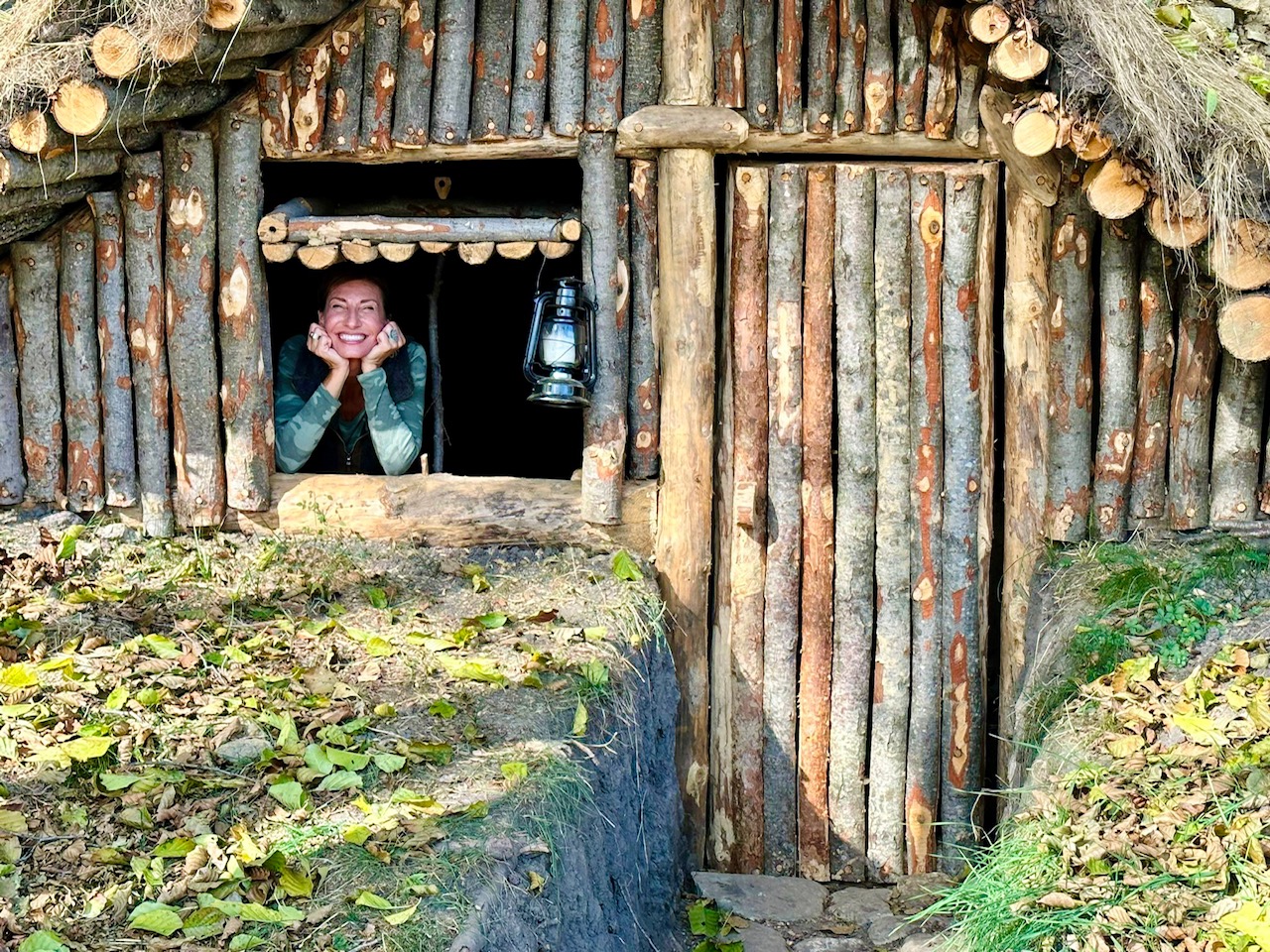
Long-Term Shelter
If you want to live in the wilderness long-term, it will take strategic planning and practical skills. This kind of shelter is an essential refuge that will protect you and your family from the weather and other potential threats, while also providing you with a level of comfort during a prolonged stay in the wild. It can mean the difference between simply surviving and truly thriving in nature. This shelter was built by Ionuț Păun.
To begin, you will want to consider your building site, including drainage, storm protection, safety, and flat ground. You will also want to seek out a site that is surrounded by thick trees. Land with long grasses is ideal to ease digging and supply clay soil as a building material. First, you will need to dig a 15 x 15 foot (4.5 m x 4.5 m) trench that is 4-5 feet (1.2-1.5 m) deep. Next, locate trees that have a minimum diameter of 10 inches (25 cm) that are long enough to cover the hole. Once they are felled, remove the bark. Five will be used to create the roof supports, which will be secured by wooden brackets. An additional tree will be used to create the frame for an entrance, which will be secured with wooden pegs.
Now you will use felled and stripped trees that are approximately 12-15 inches (30-38 cm) in diameter and around 15 feet long to stack along the roof supports on either side. To seal the cracks of the roof, shovel dirt and mud from the hole you dug and pack it into the gaps. Repeat until the roof is fully sealed. For a waterproof seal, cut squares of sod to place on top of the dirt, mud, and clay sealant. Use a thick layer for maximum seal.
Once the four internal supports are set up, you can build the walls by inserting logs along the length of the wall into the gap between the dirt and wood supports you constructed. Lastly, you will construct the door and window frames and attach them to your shelter by inserting wooden pegs into the drilled holes. Inspect the window and identify any gaps that need filling with carefully selected and cut pieces of wood.
Why Everyone Should Have This Wilderness Guide On-Hand
This isn’t your average survival manual—it’s a guide to creating a second home in the wild. You’ll discover how to live off the land and build what you need without carrying excess gear. Stash it in your bug-out bag and you’ll be ready to face emergencies with confidence, knowing you can thrive in nature for the long term.
The guide is organized into eight sections, including:
Location
- The Best Places to Live in the Wild
- The Survival Foraging Map
Shelters for Living in the Wild
- Choosing the Best Location for Your Shelter
- One-Week Shelter
- How to Build a One-Month Shelter
- Long-Term Shelter for Living in the Wild
Water and Fire
- How to Collect Rainwater in the Wild
- How to Purify Water in the Wild
- Starting a Fire 101— Even in the Rain
- Advanced Fire Techniques
- Firewood Safety
Food
- How to and Where to Set Up Traps for Small Game
- Edible Plants, Mushrooms, and Poisonous Look-Alikes
- Fishing Techniques
- How to Tap Trees
- How to Preserve Food in the Wild
- Tending the Land: How to Cultivate the Land and Food
Wilderness Basic First Aid
- Medicinal Plants, Mushrooms, and Lichens You Can Find in the Wild
- Bites and Stings
- Bleeding and Breakage
- Pain Management
- Infections
- Digestive Upsets
- Taking Care of Your Feet
- Hypothermia
Crafting in the Wild
- Knots That Are Extremely Useful in the Wild
- How to Craft Tools and Weapons in the Wild
- Wilderness Pottery and Containers
- How to Build a Stone Oven in the Wild
- How to Build a Smokehouse
- How to Create Cords and Strings from Plants
Safety
- How to Protect Yourself from Bears, Cougars, and Other Wild Animals
- How to Become Invisible in the Wild
- How to Track and Use Bird Language in the Wild
Personal Hygiene
- Crafting Wild Soap, Toothpaste, and Other Items
- Keeping Your Body and Clothes Clean in the Wild
- Feminine Hygiene Tips in the Wild
- Latrine and Hygiene
- Keeping Your Feet Healthy
Life is uncertain — don’t wait. Pick up your copy of my Wilderness Long-Term Survival Guide today so that you are prepared if a crisis hits or you simply want to enjoy spending time in nature safely and without worry. Live in Europe? Your link is here. This book is a game-changer!
Next up in my Survival Series: Water. Stay tuned!
Nicole Apelian
Online Wilderness Survival Academy
Seeking hands-on instruction? My online Wilderness Long-Term Survival Academy is for you!
With each class you complete in the Academy, you’ll become more self-sufficient. No matter where life takes you, the skills you master in the Academy will always be on hand.
Best of all, you can complete the course at your own pace — in a 3-day marathon, over three weeks, or even a few months. It’s entirely up to you. Or you can jump straight to the course about a specific project or subject that interests you right now.
My Wilderness Long-Term Survival Academy is NOT a subscription. You pay once and you and your family will have access to it for life, from your mobile phone, your tablet, your laptop, or TV. And you can access it from anywhere in the world. Get started by tapping here today!

